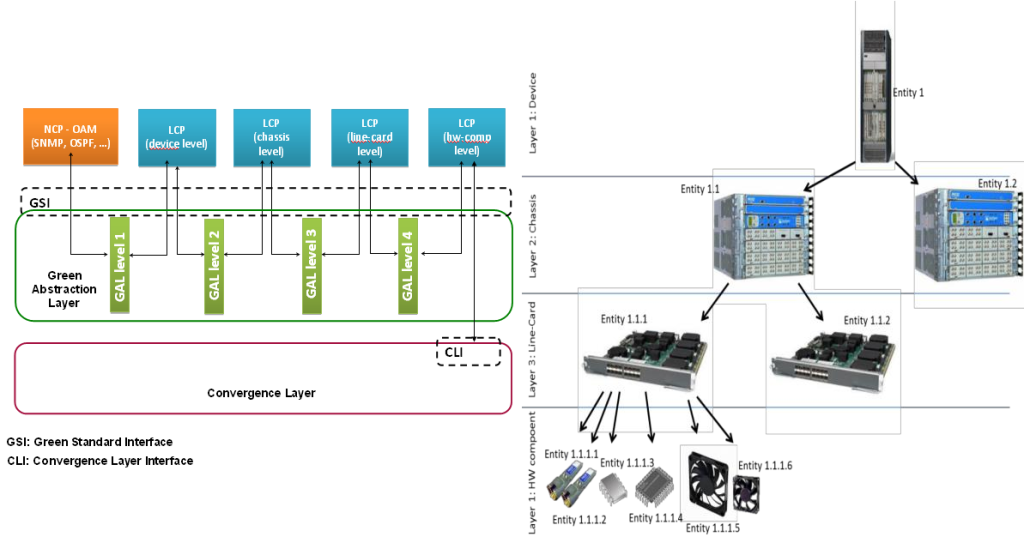The transition to more energy efficient infrastructures has to take into account the implications to Quality of Service (QoS) / Quality of Experience (QoE) requirements based on the supported services and applications as well as the requirements imposed by the network administrators and services providers. At the same time, much higher flexibility, as well as enhanced control and management capabilities, are required to effectively deal with the performance/power consumption trade-off, once the new dimension of energy-awareness is taken into account in all phases of network design and operation. The overall configuration needs to be consistent (i.e.,minimum power consumption & QoS constraint satisfaction).
This challenge is going to be addressed by the Energy Efficiency vs QoS trade-off Use Case based on the technological artefacts that will be developed within ARCADIA. Sophisticated distributed control/management techniques can be realistically deployed – both at the network edge and inside the network – to dynamically shape the allocation of resources and relocate applications and network functionalities, trading off QoS/QoE and energy at multiple granularity levels. Several challenges are going to be faced such as ensuring scalability of the provided solutions based on distributed intelligence schemes among the Smart Controllers, avoiding communications overhead where necessary and proper placement of controllers.
It is important to note that access to energy-aware data will be supported based on the adoption of the Green Abstraction Layer (GAL) standard, mainly developed within the framework of the ECONET project and recently adopted as an ETSI standard, that allows to map the hardware level management of energy consumption in the various network devices. GAL offers a simple and uniform interface to the control plane based on which it makes explicit the trade-off between consumption and network performance, it facilitates the mapping of consumption of hardware blocks with virtual/logical network resources and hides the details/complexity of internal power modulation mechanisms. Different energy profiles for each device associated with specific performance issues will be supported in the use case.
Regarding the testbed for the deployment of the use case, the DROP distributed software router is going to be used (a prototype implementation is available by the involved TNT lab (www.tnt-lab.unige.it) from CNIT within the framework of the ECONET project). DROP aims to enable a novel distributed paradigm for the control and the management of flexible IP-router platforms based on commodity HW and the Linux operating system. From a physical point of view, the DROP architecture is composed of three main building blocks: a number of devices (or “elements”) running the SW for performing operations at the data- and/or control-plane; a number of network interfaces toward “external public” networks (i.e., toward other network devices); an “internal private” network that is used to exchange data-path traffic and inter-element signalling messages. In rough words, DROP allows building extensible and flexible multi-chassis routers on top of server HW platforms and the Linux operating system.
More information about the use case will be published as the project progresses.






